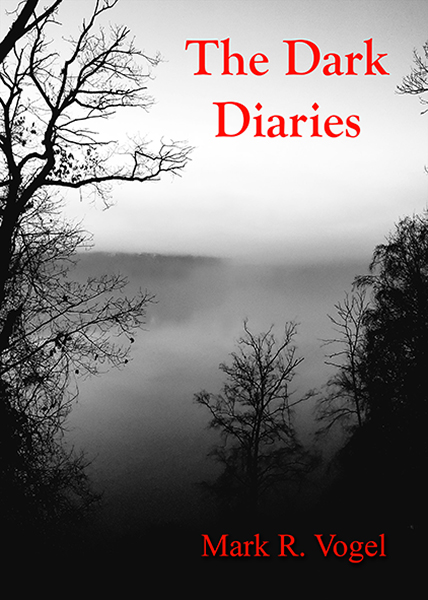Rachel Talalay (Tank Girl, Ghost in the Machine), production manager of A Nightmare on Elm Street (NOES) and its sequel, and producer of parts 3 and 4, makes her directorial debut with the closing chapter in the A Nightmare on Elm Street saga. The garbled work, much like its antagonist, should have been left for dead as Michael De Luca’s (In the Mouth of Madness) script fails, as do his characters at one point during the film, to find direction. Freddy’s Dead busily competes with Jack Sholder and Renny Harlin’s installments in the series as worst of the collection.
After years of hard work, Freddy Kruger (Robert Englund, A Nightmare On Elm Street, Dead & Buried, New Nightmare) finally runs out of Elm Street kids, except for one. John Doe (Shon Greenblatt, Chopper Chicks in Zombietown), who coincidentally lives at 1427 Elm Street, directly across from the Thompson home, begins having nightmares involving Freddy Kruger. The demonic antagonist uses John in order to gain access to his long lost daughter, Maggie Burroughs (Lisa Zane, ), a.k.a Katherine Kruger, who was adopted out in 1966 after Fred was burned alive by the Elm Street parents of the children he murdered. After discovering the source of her father’s malicious powers, Maggie sets out to destroy him once and for all.
It seems that the trademark for the NOES series, aside from Freddy himself and his downfall at the hands of a female (even, of all things, the theme music is sporadic, NOES 2 omitting Charles Bernstein’s ominous score), is that there must be at least one major thematic faux pas committed. As the title declares, Freddy dies in this one (thus, I’m hopefully not spoiling anything here). However, his demise comes when he is pulled out of dreamland and into reality . . . just as Nancy does in the original! Now I’m going to attempt to conveniently forget that throughout the entire series, Freddy’s Dead included, we are never once given a legitimate alibi for Kruger’s return. What I’m unwilling to allow to pass unnoticed is the barbiturate of a plot that Michael De Luca gives us. It seems as if Luca came up with the tangent of an idea of Freddy having a child after dealing with similar themes involving children while revising the script for NOES 5. The storyline’s redundancy doesn’t end there unfortunately. Breckin Meyer’s (in his first role before being cast in The Insider, Go, Clueless, Rat Race, Road Trip, Kate & Leopold, Payback, and The Craft) character, Spenser, not only dresses like Mark from the previous film (who is an effigy of William Stanton in NOES 3), but plays role reversal with the latter’s Super Freddy as he “powers up” after being transported into a video game. Also, in a more than likely coincidence but a bad one nonetheless, we watch as Spencer jumps and dodges video representations of his father and Freddy only to find himself transported into a locker room for a round of towel snapping, à la NOES 2 (which I would have thought Luca would do us the courtesy of ignoring in hopes of allowing the cinematic atrocity to die a peaceful death, all for the greater good of humanity).
Aside from the bare bones of the plot prompting enough déjà vu that to even attempt to feign as if you are getting your money’s worth is a leap of bad faith, I couldn’t help but roll my eyes during the opening credits where it is revealed that, alas, there just happens to be one sole survivor on Elm Street. How convenient because, ironically, that’s all we need in order to have an excuse for one more cash cow, just forget that it’s a new decade for the icon and that he’s been freed of the NOES title. Also issued during the credits is the tidbit that Springwood is located in Ohio. However, Springwood was first located in California (posited in the original NOES press release, yet the press kit for NOES 2 declares that the Walsh’s house is sweltering during one of the “coolest” times of the year even though a pool party takes place during the movie, go figure), and reinforced in NOES 5 (see the tags on Dan’s motorcycle), before being teleported to Ohio. Yes, every town has an Elm Street, as Freddy reminds us during the film, yet the victims involved throughout the series busily research and discover the history (which is the same, hence the series) of the town each time.
Freddy’s Dead attempts to make Kruger’s final curtain call the most comical and, in all but one scene, comes off more annoying than in any of his previous outings. This isn’t to say that the work doesn’t host some interesting moments and even ideas, it does, but they don’t congeal and the narrative threatens to induce mass insomnia. Yes, when Carlos (Ricky Dean Logan, Buffy the Vampire Slayer) begins to unfold a road map and layer upon layer continues to unravel, we can all chuckle for having been there. Also, the existential moment of Carlos, Tracy (Lezlie Deane, 976-EVIL), and Spencer attempting to travel through a foreign town in hopes of returning to the halfway house/adolescent recovery center is amusing. I was pleasantly surprised to find the topic of incest and child abuse (real life horrors) introduced into the story as Tracy’s familial terrors parallel Freddy’s as we are issued the genesis behind the antagonist’s seeming immortality and omnipotence. But, in trademark NOES style, even the references to other nightmare works–Freddy’s initial appearance as the Wicked Witch of the West after John experiences a nightmare at 20,000 feet (sans the carpet-covered monster)–cannot save this drowning work. The best analogy for the film is that its inverse Children of the Corn plot in which Talalay uses of only half of Freddy’s trademark colors as a foreshadowing technique, green in this case, serves as an apt metaphor for how much of a movie had been made by the closing credits.
The only interesting aspect of the film which kept my interest and succeeded in managing to hold itself together was Freddy’s confrontation and murder of Carlos. After a droll cat and mouse game involving Carlo’s hearing aide, we are witness to his Scanners-esque death. However, this fleeting moment of fun is quickly negated when the film’s over hyped climax passes by unnoticed and with hardly a faint whimper. Even the director freely admits that Freddy’s demise was less-than-earth shattering because she was forced to focus on the special effects and 3-D cinematography rather than the action and the characters involved within the frame.
Perhaps the fact that Freddy’s demise is executed in the same manner by which he perishes in the original is a crowning, ironic example of the old adage that one would be wise to leave well enough alone. I suppose my main complaint with the saga is that, aside from less-than-engaging scripts and non sequitur plots, fear is never effectively or consistently evoked. Yes, we have scares, but considering we repeatedly enter a realm where the writers could prey upon the collective unconscious, they do so only sporadically, i.e. people’s fear of needles, utilized in NOES 3. Instead, most of the six films waste time with highly visual, but languidly written, scenes which, aside from the special effects and occasional gore, reach few on a truly psychological level.
For the record, the original was a horror masterpiece while other film except the fifth installment, which was merely entertaining, succeeded in bringing its audience an hour-and-a-half closer to their own deaths (Jack Sholder and Renny Harlin are still on the run after death warrants were issued for their atrocious installments). However, the character of Freddy Kruger captured the American mindset with his lanky stature and mismatched wardrobe which, in and of itself, was worthy of a chuckle at best, that is, until his daunting determination, seeming omnipresence, and–later into the mythology–cocky reassurance was propelled forward by his bloodlust. Unlike many of his murderous contemporaries who do not have a motive for their homicidal impulses, Freddy has no qualms with the fact that he kills for the shear joy of it (his m.o. was forgotten early into the series with NOES 4). Yet, only by persistent cultural saturation (approximately one NOES film a year) did he become a horror icon because his personality wavers from stalwartly homicidal (NOES 1 and 2), to indifferently rote (3 and 4), before ending as the sardonic quipper (5 and 6). Nonetheless, Freddy has made his mark on the genre as one of the most original, unforgettable monsters in movie history.
Trivia tidbit: Peter Jackson wrote an early draft of the film but it was subsequently dropped.
-Egregious Gurnow
- Interview with J.R. Bookwalter - January 22, 2015
- Interview with Andrew J. Rausch - January 22, 2015
- Interview with Rick Popko and Dan West - January 22, 2015
- Interview with Director Stevan Mena (Malevolence) - January 22, 2015
- Interview with Screenwriter Jeffery Reddick (Day of the Dead 2007) - January 22, 2015
- Teleconference interview with Mick Garris (Masters of Horror) - January 22, 2015
- A Day at the Morgue with Corri English (Unrest) - January 22, 2015
- Interview with Writer/Director Nacho Cerda (The Abandoned, Aftermath) - January 22, 2015
- Interview with Actress Thora Birch (Dark Corners, The Hole, American Beauty) - January 22, 2015
- Interview with Actor Jason Behr, Plus Skinwalkers Press Coverage - January 22, 2015


